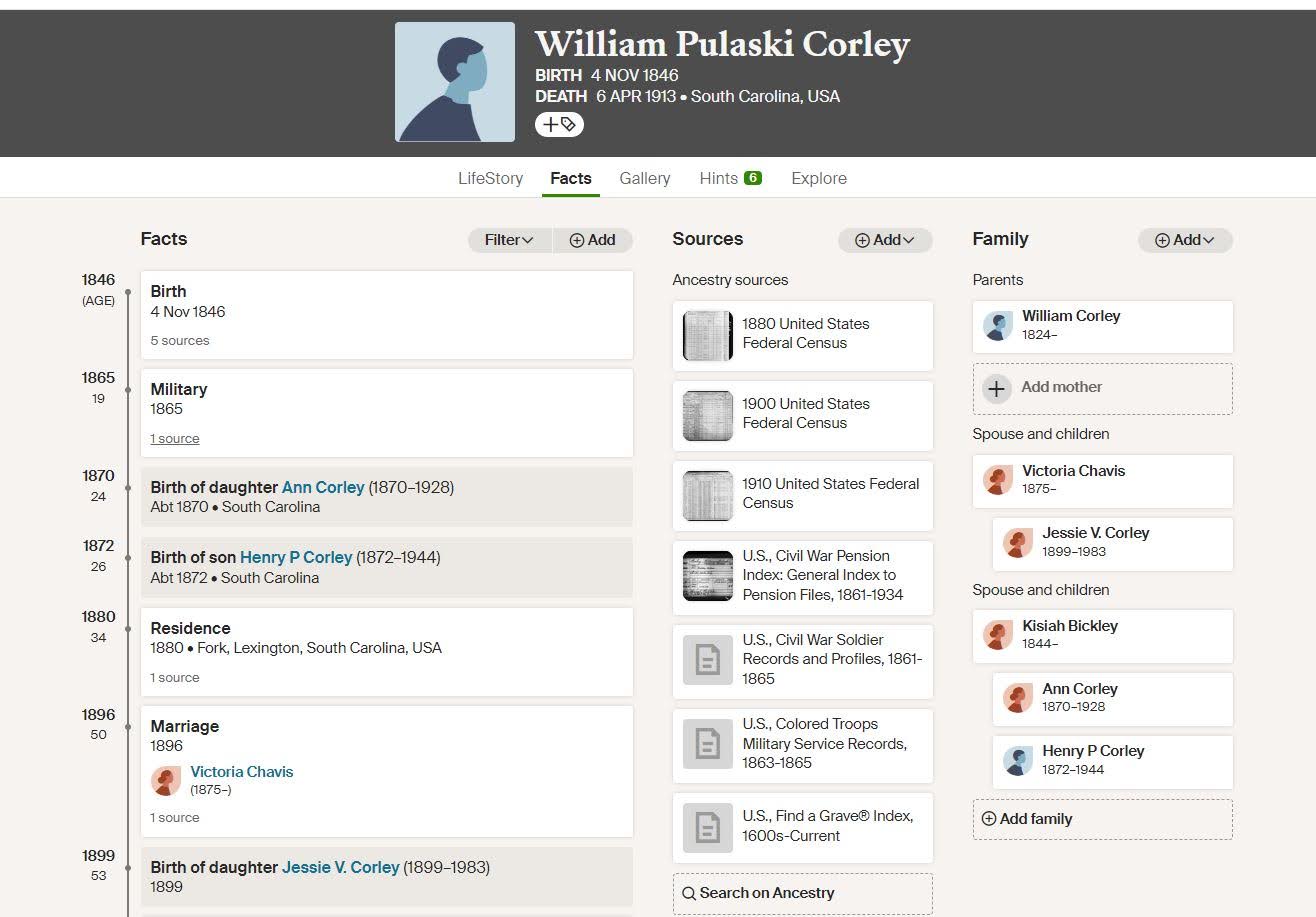Al Hester, Historic Sites Coordinator, South Carolina State Parks
May 15, 2024
The Learning Lab series provides practical tips, advice, and guidance on specific historic preservation topics that are relevant to African American preservation projects. We hope these posts help community members and leaders better navigate the complexities of historic preservation work successfully.
| Short Description of topic |
|---|
| Family history is history, and genealogy can be a useful tool in historic preservation. Learning who was associated with a Black historic property is the key to understanding its history – how it was built, how it was used, and how it changed over time. Genealogy can be a good first step in identifying former property owners and residents. It is also a tool for finding descendants who may know about the property’s past, including the family stories and traditions that have been passed down over generations. They may also be willing to share historic photographs, architectural plans, or records that can aid in making good historic preservation decisions. |
African American Genealogy: Ten Tips for Using Ancestry.com
- Ancestry.com “hints” can be really useful, but don’t accept them uncritically without reviewing them carefully. If possible, try to see if you can find additional sources to verify the information.
- Make use of the South Carolina death records. Though they only begin around 1915, they include clues to earlier generations. For example, they hold valuable genealogical information, like parent’s names and burial place information, that is difficult to find elsewhere. They are especially helpful when you are trying to find ancestors before the 1870 census, since those parents that are listed may have been enslaved and were not listed in the censuses before 1870.
- If you find someone with shared ancestors, consider sending them a message to their Ancestry.com profile to compare notes–especially if they have information that isn’t included in other trees. They may have family memories that have been passed down.
- If you find sources that are not included in Ancestry.com, consider adding a photograph/scan or a description of them in your ancestor’s profile. It is great to come across a tree that has that kind of unusual information, and by adding it you’ll be enriching everyone’s research.
- Remember to use obituaries. Obituaries, especially from the later 20th century, often include long lists of survivors, including grandchildren, siblings, etc. This information can really help you fill in gaps and find descendants.
- If you are lucky enough to be researching a place that had city directories, these can be very useful for determining past property owners or occupants such as renters over time.
- When working on a Black history preservation project, Ancestry.com can help you find descendants whose ancestors were associated with a particular historic property. You may know who the historic owners or residents were, and genealogy is a good way to connect people in the past to people in the present. Descendants often have important information about a property that isn’t recorded anywhere else. It can also be a very positive thing for descendants to be involved in historic preservation decisions.
- Remember that ages, names, and even racial descriptions can change in primary source documents over time. Sometimes the person compiling the information made an error, or sometimes people had several first names that they used at different times. For example, in the photograph of the death certificate above, William Pulaski Corley is listed just as “Pulaski Corley”. In the case of mixed race people, they might have been recorded as different racial categories over time. Try to look at other corroborating information such as other family members in the household, occupation, residence location, etc. before you decide whether or not a person is the one you are looking for.
- Newspaper databases are often linked to Ancestry.com, but you may need a separate subscription to access them. It is worth it to subscribe, since it will open up access to a lot of important information, especially obituaries. But there are also free newspaper databases (such as Historical Newspapers of SC, https://historicnewspapers.sc.edu/) that aren’t linked to Ancestry–so you may want to find those, and then bring in the information you find manually.
- Finally, don’t just copy other people’s trees–they may include errors that have been passed from person to person. But do look at them closely and see if you can verify some of the information to add to your tree. Use them as a lead, but do your own research!

